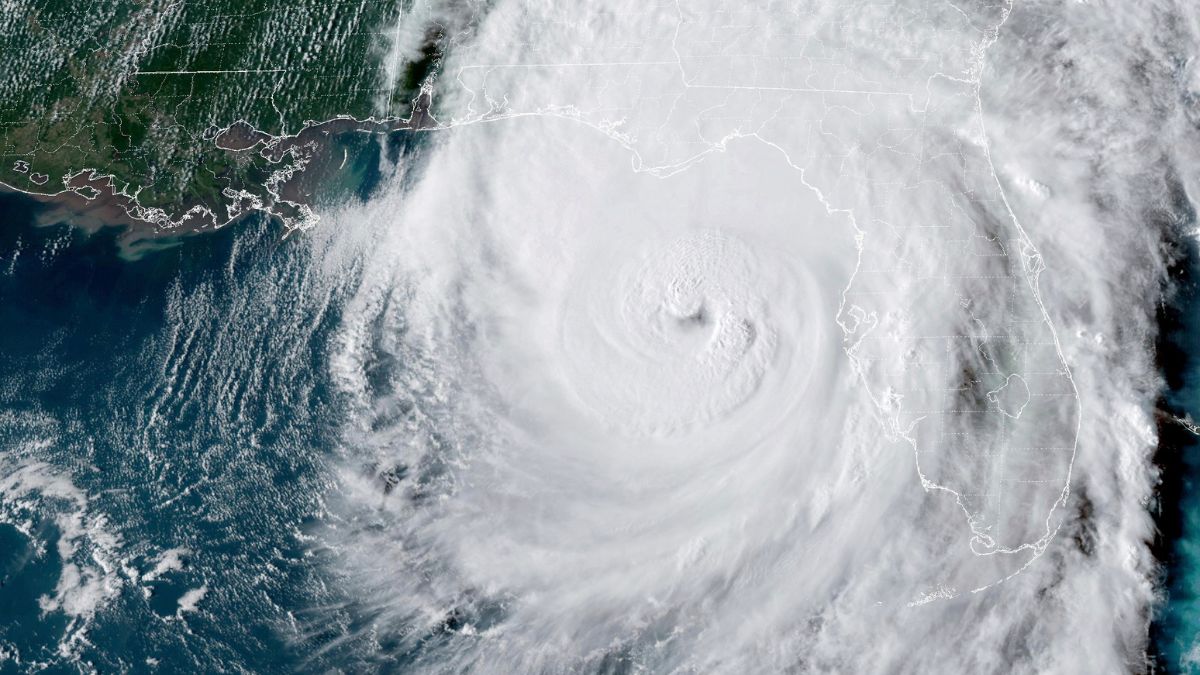As Hurricane Helene makes landfall in southeastern United States, forecasters warn of an impending storm surge as high as 20 feet along Florida’s coast.
With the storm expected to cause catastrophic damage, experts and officials are urging residents to take the threat seriously.
What is storm surge and how does it work?
Storm surge is the abnormal rise in seawater level during a storm, driven primarily by the powerful winds of hurricanes pushing ocean water onshore.
The National Hurricane Center (NHC) describes it as “the greatest threat to life and property along the coast.” During Hurricane Helene, water levels could rise up to 20 feet above normal, particularly in vulnerable areas like the Florida Panhandle.
Storm surge starts far out at sea, where the intense winds of a hurricane cause water to pile up beneath the storm system. As this mass of water approaches the coastline, it is forced inland, inundating communities.
The surge may appear as a gradual rise in the water level that lasts for several hours, and with powerful waves on top of it, the devastation can be immense. The topography of the coastal sea floor, the shape of the coastline, and local tidal conditions all influence the height and reach of the surge.
The water is already at an elevated height at high tide. If the storm hits then, it pushes the surge even higher. This phenomenon was observed during Hurricane Isaias in 2020, where a surge of 4 feet at Myrtle Beach coincided with high tide, elevating water levels more than 10 feet above normal.
A similar combination of factors could lead to a worst-case scenario with Hurricane Helene.
What roles does climate change play in a storm surge?
As the global climate crisis accelerates, the intensity of hurricanes and the severity of storm surges have increased. Since the 1970s, the number of storms reaching Category 4 or 5 — with winds over 130 mph — has doubled in the North Atlantic.
Rising sea levels, a result of melting ice caps and the warming of ocean water, are compounding the effects of storm surges. Warm water expands, and this expansion, along with freshwater from melting ice sheets, has been raising sea levels steadily.
As Helene pushes water inland, the already elevated sea level will worsen the surge, allowing it to penetrate further inland than previous storms.
The Gulf of Mexico, where Helene is strengthening, has been experiencing record-high ocean temperatures, which act as fuel for hurricanes. The warmer the water, the more powerful the storm becomes, escalating the danger posed by storm surges.
How has Hurricane Helene impacted the US?
Hurricane Helene made landfall late Thursday night near Florida’s Big Bend as a Category 4 storm, bringing with it winds up to 140 mph and torrential rains. The storm’s size is significant, with hurricane-force winds extending up to 275 miles from its center.
The US National Weather Service (NWS) warned that Helene’s storm surge could be “catastrophic and unsurvivable” in some areas, particularly Apalachee Bay, where water could rise 20 feet above ground level.
“A catastrophic and deadly storm surge is likely along portions of the Florida Big Bend coast, where inundation could reach as high as 20 feet above ground level, along with destructive waves,” warned the NWS.
Officials in Florida have urged residents to evacuate immediately, with evacuation orders in place for low-lying areas stretching from Tallahassee to Tampa and Sarasota.
In the aftermath of Hurricane Michael in 2018, which caused over $25 billion in damage, residents of Florida are acutely aware of the devastation a powerful storm can bring. Many residents have heeded evacuation orders, but those who chose to stay were met with stark warnings from local authorities.
“Please write your name, birthday, and important information on your arm or leg in a PERMANENT MARKER so that you can be identified,” said the sheriff’s office in Taylor County, highlighting the grave danger.
How catastrophic is Hurricane Helene predicted to be?
Hurricane Helene is expected to cause widespread damage beyond just the storm surge. The NHC has issued warnings of damaging winds, flash floods, and even tornadoes across a wide swath of the southeastern US More than 1 million homes and businesses in Florida have already lost power, with significant outages reported in Georgia.
Two people were killed in a possible tornado in Georgia, and one person died in Florida after a sign fell on their car.
The devastation from the storm surge itself will leave a lasting impact on the region. Roads could be swept away, beaches eroded, and land contaminated with saltwater, affecting local agriculture and wildlife.
In some areas, surges have been known to carry up to 770 kg (1,700 lbs) of water per cubic yard, easily destroying homes and sweeping vehicles out to sea.
Even as Helene weakens after landfall, the storm is expected to dump over 14 inches of rain in some areas, leading to flash floods that could be the worst seen in a century. States as far north as Tennessee are bracing for extended power outages and potential landslides.
With extreme weather events on the rise, the costs of recovery are mounting. Last year alone, the US experienced 28 weather disasters, each costing at least $1 billion. As the climate crisis intensifies, the long-term economic burden of these events will only increase.
“Please, please, please take any evacuation orders seriously!” urged the NHC. As Helene prepares makes landfall, the combination of high winds, storm surge, and torrential rain could turn the Florida coastline into a disaster zone.
Hurricane Helene marks the eighth named storm of the 2024 Atlantic hurricane season, a season predicted to be above average due to the record-warm ocean temperatures.
With inputs from agencies


)

)
)
)
)
)
)
)
)



